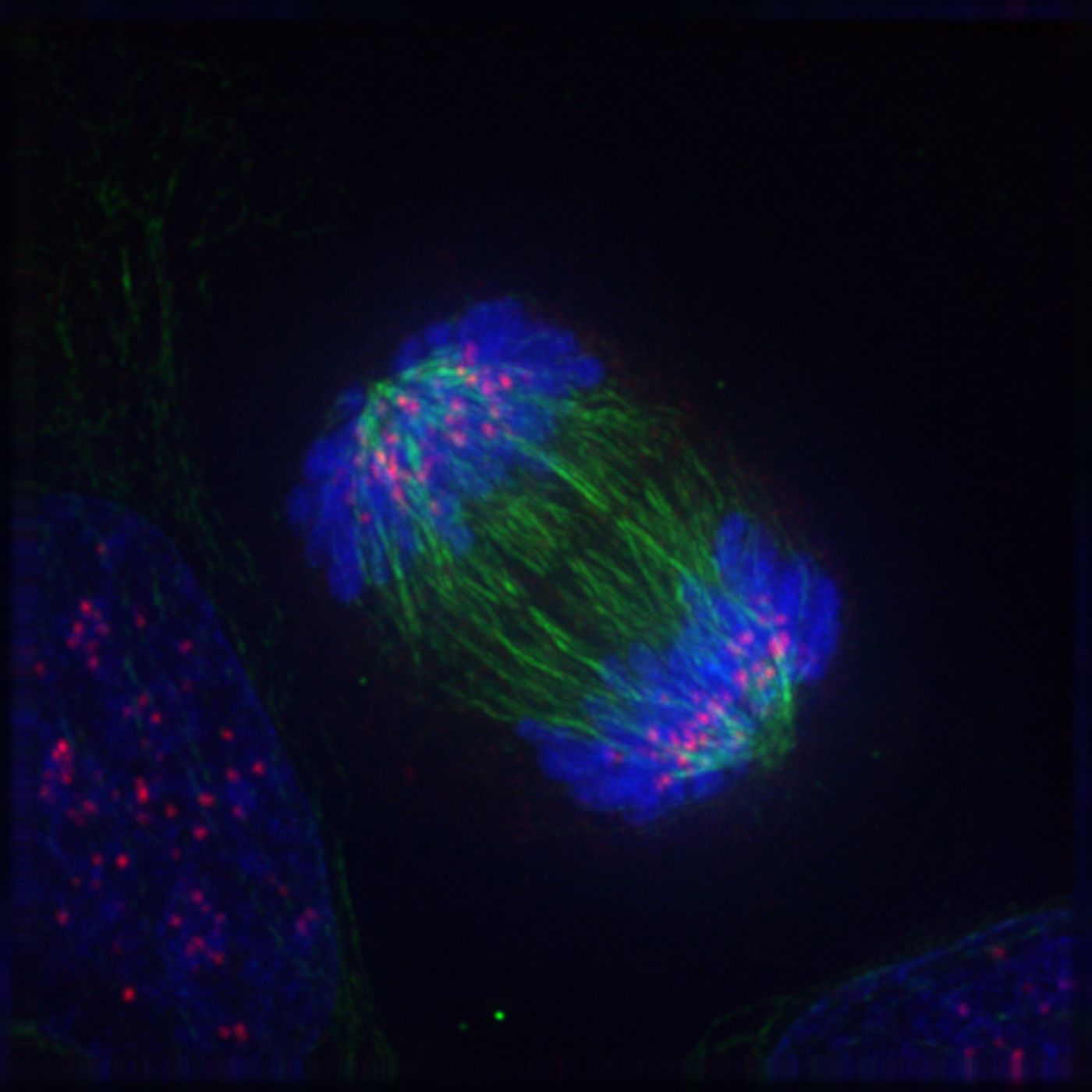Cell division is a fundamental process in life. Our cells must continually replicate, and that replication and growth has to be controlled; uncontrolled cell division is associated with diseases like cancer. Scientists have made a discovery about the process that could help in the development of treatments for cancer. Researchers found a mechanism that keeps cells from splitting in two until the replicated genomic material has been divvied in equal amounts between the new daughter cells.

A cell undergoing mitosis / Credit: Wikimedia Commons/ Delta Vision Roy van Heesbeen
"Our study has found a 'safety catch' in the cell division machinery, which prevents cells from dividing before they have confirmed that their chromosomes have been successfully aligned in the cell,” said Professor Jon Pines, Head of Cancer Biology at The Institute of Cancer Research, London. He was the senior author of a report on the findings,
published in Molecular Cell.
"In the future it might be possible to disable this safety catch in cancer cells with drugs - which would force cells into dividing before they are ready, and potentially kill them by introducing major errors into the division process," he continued.
The investigators studied how BubR1 functions in mitosis, when the chromosomes of a cell are copied and pulled into two different cells and described in the following video. BubR1 is a molecule that helps form a complex that stops the chromosomes from moving until they are ready, thus keeping the cells from dividing. In this work, the scientists focused on a piece of BubR1 that has remained the same over all kingdoms of life but bacteria over the course of evolution; the conservation of that piece indicates it likely has a vital function.
After deleting the BubR1 gene from cells and replacing it with BubR1 whose conserved piece had been altered, they looked at how the changed cells divided. Time-lapse photography combined with powerful microscopes showed that cells with altered BubR1 ended up with unevenly divided chromosomes in daughter cells; the mutant BubR1 could not stop mitosis until the chromosomes were ready, resulting in the aberration. The investigators concluded that the conserved portion, they dubbed it the ABBA sequence, acted as a safety catch cells rely on to properly position chromosomes.
That safety catch is used much more often in cancer cells as they often have many more chromosomes to properly position. The researchers suspect that forcing cells to divide prematurely could possibly kill them, and a small molecule drug interfering with BubR1 function should be investigated in cancer research.
"Unraveling the complexity of cell division is fundamental to understanding cancer. We know cells rely on safety mechanisms to prevent them from dividing before they are ready, and these may be particularly crucial in cancer cells, with their complex, unstable genomes and extra chromosomes.
"If we could find a way to inactivate this safety catch, we might be able to kill cancer cells specifically by forcing them through division prematurely,” said Professor Paul Workman, Chief Executive of The Institute of Cancer Research.
Professor Pines became a Fellow of the Royal Society, the national academy of science of the UK. In the video below, he speaks on his election to the society as well as his research.
Sources:
ScienceDaily via
Institute of Cancer Research,
Molecular Cell









